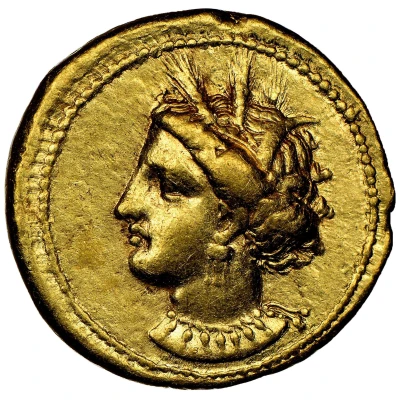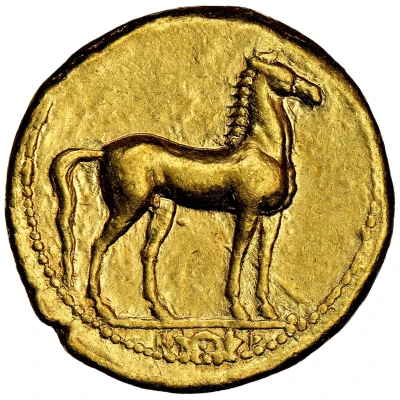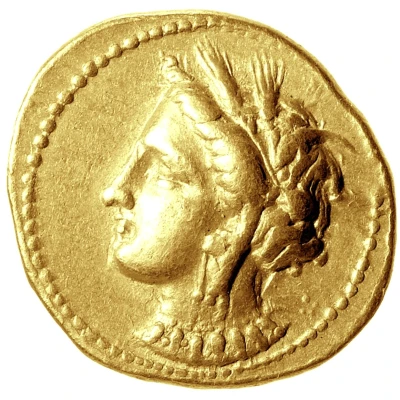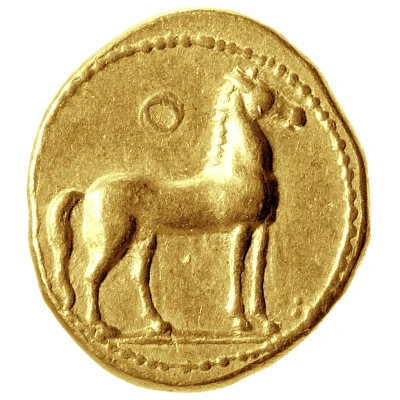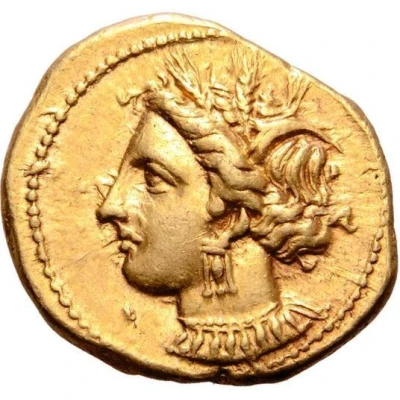
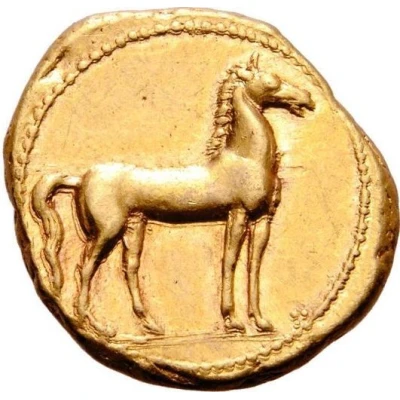

© Roma Numismatics Limited
Stater 350 BC - 320 BC
| Gold | 9.4 g | 20 mm |
| Issuer | Carthage (Zeugitana) |
|---|---|
| Type | Standard circulation coin |
| Years | 350 BC - 320 BC |
| Value | Gold Stater (12) |
| Currency | Shekel |
| Composition | Gold |
| Weight | 9.4 g |
| Diameter | 20 mm |
| Shape | Round (irregular) |
| Technique | Hammered |
| Demonetized | Yes |
| Updated | 2024-10-09 |
| Numista | N#322839 |
|---|---|
| Rarity index | 100% |
Reverse
Horse standing right; double exergual line; three pellets in triangular arrangement at horse's feet.
Interesting fact
The Carthaginian Stater coin was used as a form of currency in the ancient city of Carthage, which was located in what is now Tunisia. The coin features an image of a horse and a driver on one side, and a goddess on the other. The coin was made of gold and weighed around 9.4 grams, making it a valuable and highly sought-after form of currency in its time. It's interesting to note that the Carthaginian Stater was widely used in trade and commerce throughout the Mediterranean region, and it's been found in archaeological sites as far away as Spain and Italy. This speaks to the extensive trade networks that existed in ancient times, and the importance of Carthage as a major economic and cultural center in the region.
